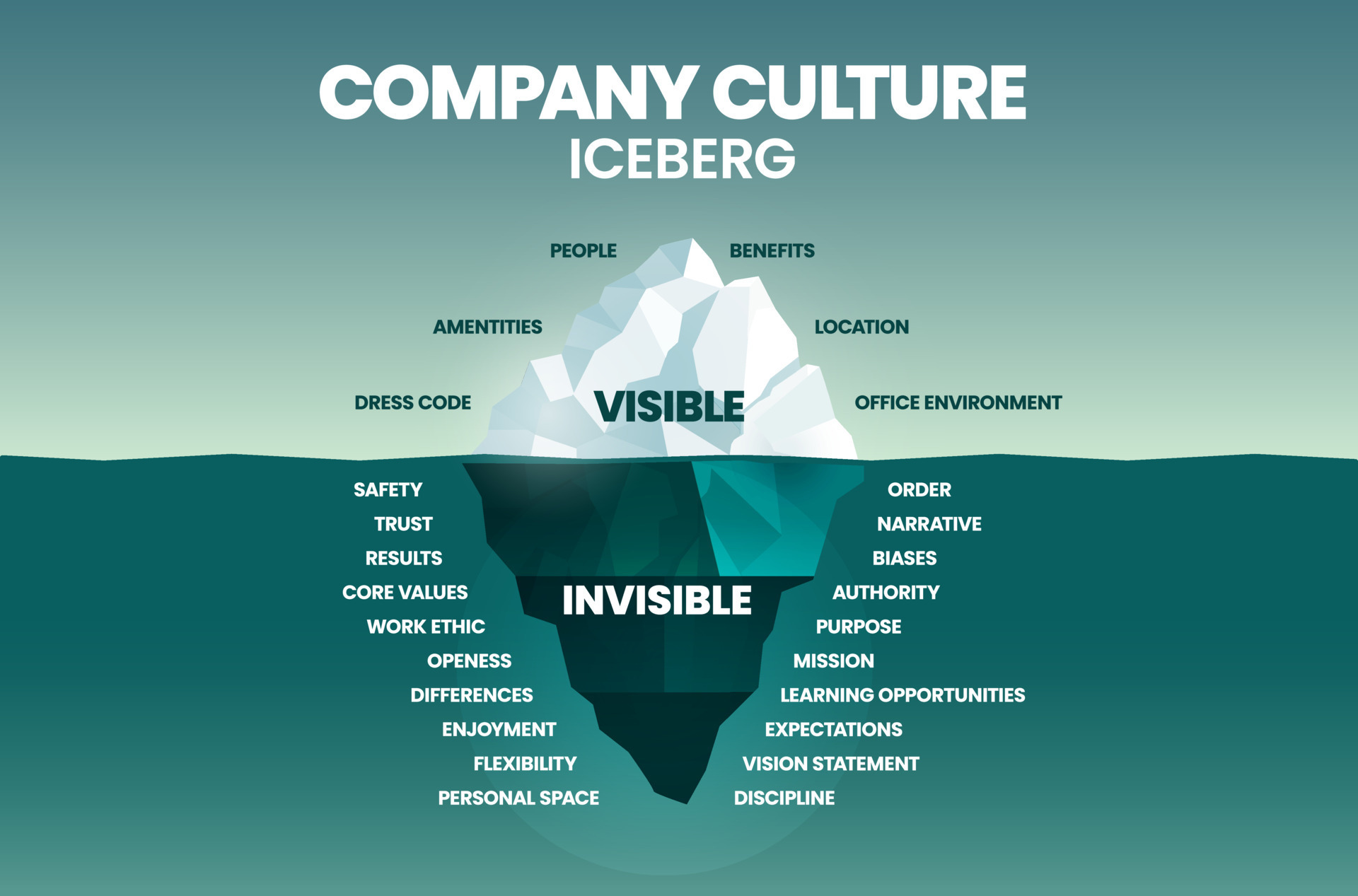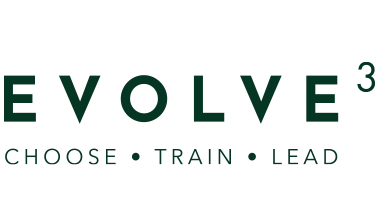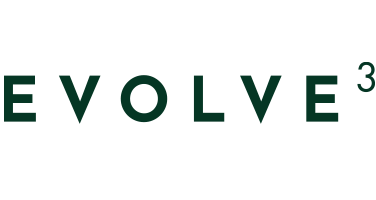
20 Mar Workplace Culture – It’s not all about the perks
Understanding the impact of culture on business success is crucial. The Iceberg Model of Culture explains that company culture, much like an iceberg, comprises visible surface elements and underlying, less obvious values and beliefs.
The visible surface, like the tip of an iceberg, encompasses observable features such as perks, benefits, and the physical work environment. However, beneath this surface lies a vast, invisible mass, representing a company’s core values and ideologies. This is referred to as the “deeper culture.”
Deeper culture encapsulates ingrained assumptions, shaping ideas about what is right, wrong, acceptable, or undesirable within a business. These values and attitudes influence staff behaviour, decision-making processes, and communication styles, serving as the foundation for an organisation’s character. It is the focus on this hidden mass that distinguishes high-performing businesses from their counterparts.
Examples of Surface Culture:
- Perks and Benefits:
Promoting work-life balance and employee well-being.
Allowing flexible work arrangements.
Offering employee discounts.
- Dress and Appearance:
Allowing flexibility in dress codes to enhance comfort and productivity.
Establishing clear guidelines for acceptable attire, especially in customer-facing roles.
- Technology:
Aligning technology with company goals.
Using technology to reinforce and reflect company culture.
- Language:
Establishing guidelines for acceptable language and communication tone.
Using communication templates for consistency and professionalism.
- Rewards and Recognition:
Implementing systematic rewards and recognition programs.
Examples of Deeper Culture:
- Authority:
Involving employees in decision-making processes.
- Health and Wellbeing:
Prioritising employee well-being in physical, emotional, and financial aspects.
Integrating employee well-being programs.
- Purpose and Meaning:
Clarifying the company’s vision and mission.
Conducting training and performance programs, to reinforce culture.
- Communication:
Fostering open, transparent, direct, and positive communication.
- Employee Engagement:
Valuing employees as key contributors to success.
Proactively communicating organisational plans and updates to build trust.
- Learning and Development:
Prioritising personalised learning and development programs aligned with growth plans.
Emphasising continuous learning to foster a culture of growth and agility.
- Collaboration and Teamwork:
Encouraging inter-departmental collaboration and projects.
Recognising and celebrating teamwork achievements.
The takeway:
The invisible part of the culture iceberg is what drives the visible elements to the surface. If you want your company culture to be the envy of your competitors and become an “employer of choice’’, focus on the elements of Deep Culture like effective leadership communication, best practice recruitment, staff training and leadership development.



